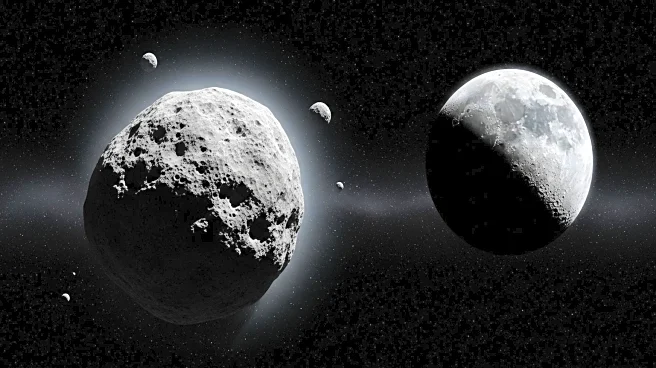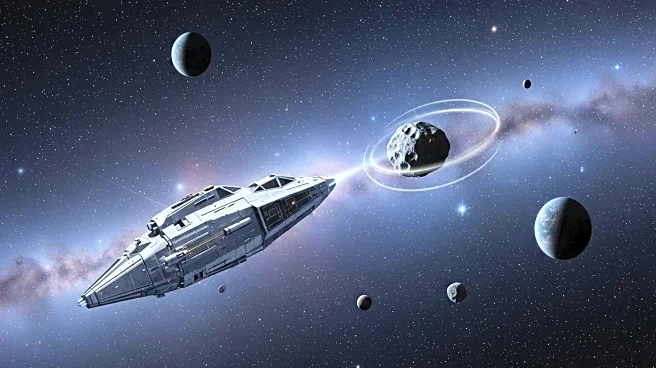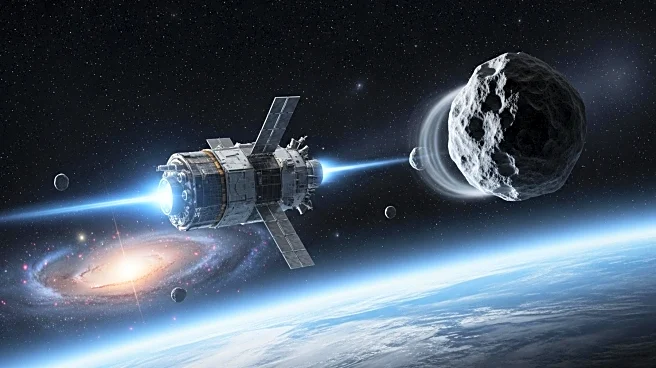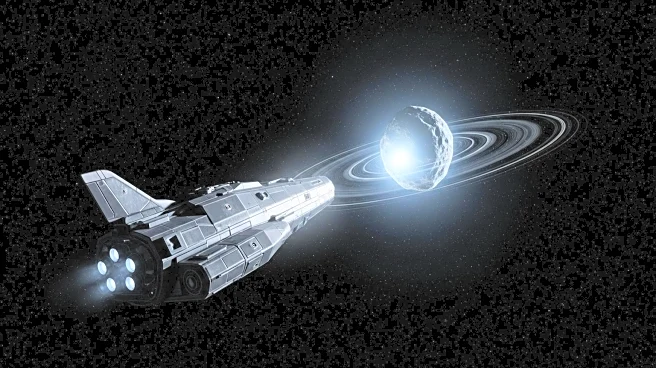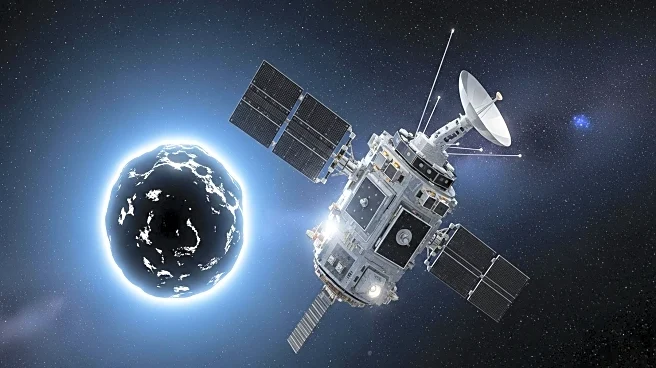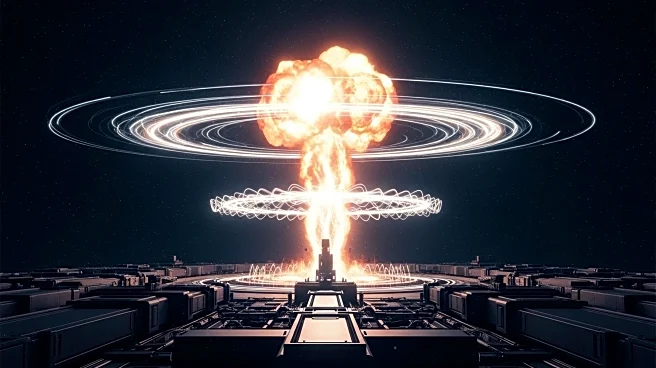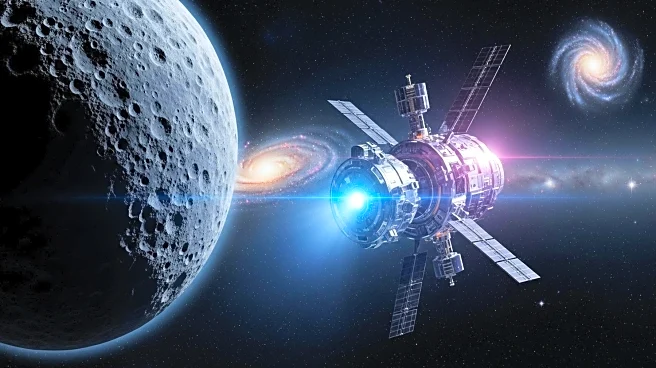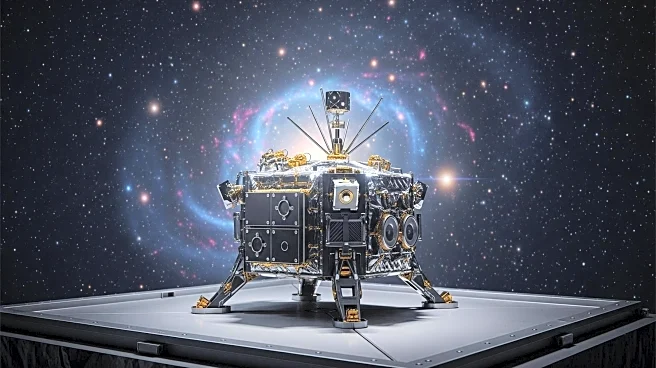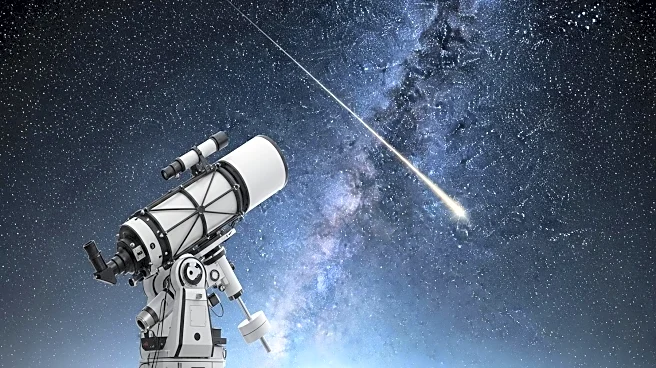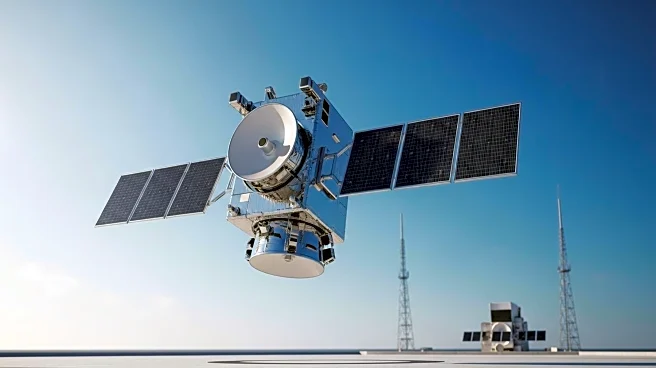What's Happening?
NASA scientists are considering a nuclear disruption mission to prevent the asteroid 2024 YR4 from potentially impacting the Moon in December 2032. The asteroid, which has a 0.00081% chance of hitting Earth and a 4% chance of hitting the Moon, poses a threat to astronauts due to possible debris from a lunar collision. The proposed mission involves detonating nuclear devices to disrupt the asteroid, a more aggressive approach than the 2022 Double Asteroid Redirection Test (DART). The asteroid's mass remains unknown, complicating deflection efforts. The team suggests launching a mission between 2029 and 2031, using nuclear devices significantly more powerful than those used in World War II.
Why It's Important?
The potential impact of asteroid 2024 YR4 on the Moon could have serious implications for space missions and astronaut safety. The proposal to use nuclear devices for asteroid disruption represents a significant escalation in planetary defense strategies. This approach could set a precedent for future missions aimed at protecting Earth and its celestial neighbors from space threats. The mission's success could enhance our understanding of asteroid deflection techniques and improve preparedness for potential asteroid impacts. However, the proposal faces challenges due to NASA's budget constraints and the low probability of impact.
What's Next?
NASA must decide whether to allocate resources for the proposed nuclear disruption mission, considering budget limitations and the asteroid's low impact probability. If approved, the mission would require extensive planning and development of nuclear devices capable of navigating space. The decision could influence future planetary defense strategies and international collaboration on space safety. The scientific community will continue to monitor 2024 YR4 and assess its trajectory, potentially adjusting plans based on new data.
Beyond the Headlines
The proposal raises ethical and environmental concerns about the use of nuclear devices in space. The potential impact on the Moon's surface and the surrounding space environment must be considered. The mission could spark debates on the balance between planetary defense and the preservation of celestial bodies. Additionally, the proposal highlights the need for international cooperation in addressing space threats, as the consequences of asteroid impacts extend beyond national borders.

